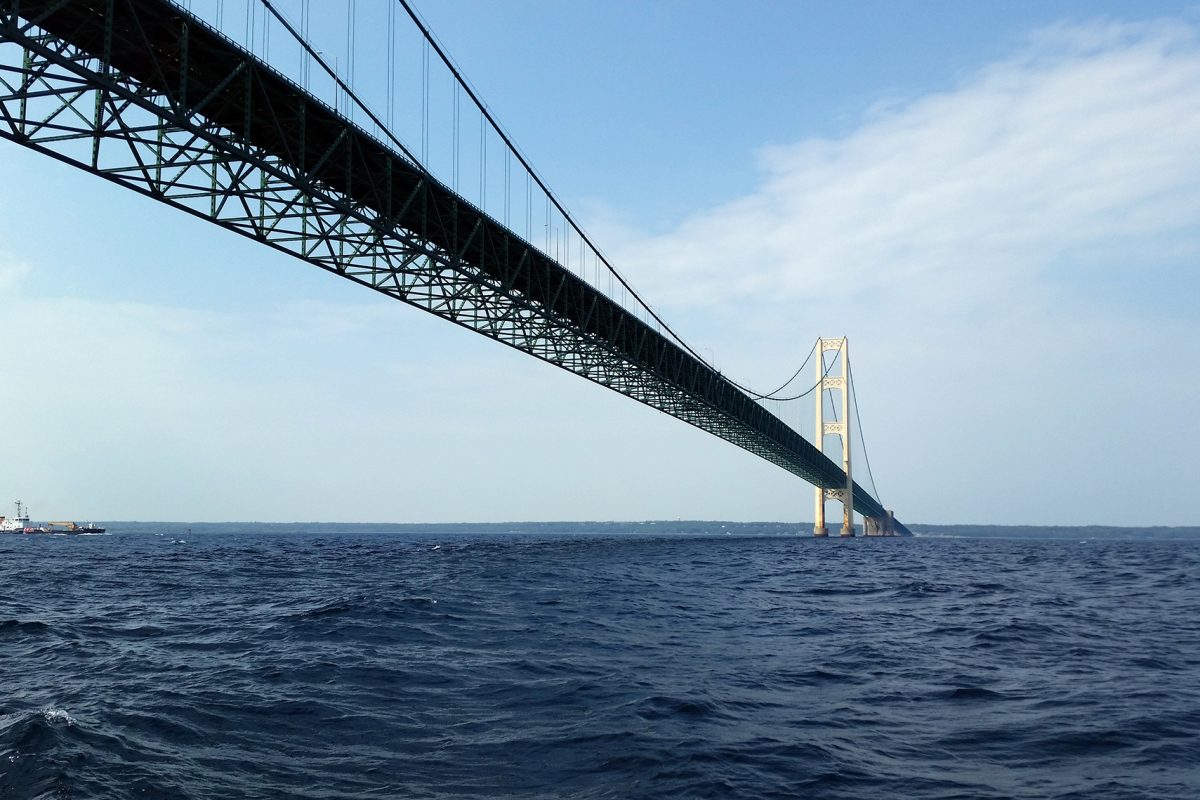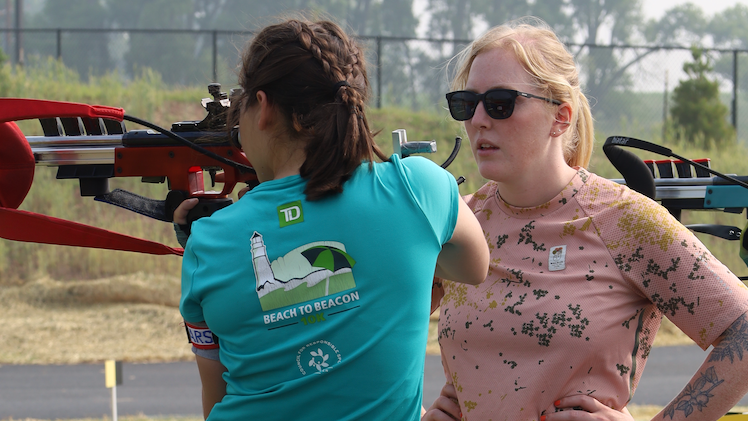(Note: FasterSkier initially made an error and reported that Lanny Barnes was not re-named to the National Team. Since then, we have corrected the article – it was in fact her sister, Tracy, who was not re-named. FasterSkier apologizes for the error.)
Last year was a historic season for U.S. biathlon. In late December, Tim Burke captured the yellow World Cup leader bib, and continued to wear it through part of January; it was the first time an American had ever led the World Cup standings. Then, in Vancouver, Lanny Barnes posted the best Olympic results for an American woman since 1994, finishing 23rd in the 15 k individual.
Burke is back, and with his teammates he is ready to attack the World Cup circuit. The men had a European training camp this summer and are positioned for one of their best seasons in years.
The women, though, are another story. While none of the talent has left the sport, Lanny Barnes’ sister Tracy was not re-named to the national team, and is instead fending for herself. And while the men will take a full relay team’s-worth of athletes to the World Cup, the U.S. Biathlon Association (USBA) has decided to take only two women to most of the World Cups – even though they were given three starting slots in each race. The flip side of this decision is that they will fund two athletes to compete in the IBU cups, which USBA views as a better opportunity for athlete development. The women’s team is as fast as ever, but with fewer World Cup starts, it will be tougher for them to create the strong results that the USBA says it must see to justify sending a full team.
But for both men and women, there are many opportunities for success this season. Read on to learn about the athletes you might be seeing in the news this winter.
Men
Walt Shepard and Kevin Patzoldt retired from the sport, but other than that the men’s team is much the same as it was last year. With several Olympic veterans on the squad as well as a couple of young guns, the men’s team has all the bases covered. Tim Burke, Jeremy Teela, and Leif Nordgren are pre-qualified for the first period of World Cups, while the rest of the team will contest the final spots at this week’s trials in Canmore, Alberta.

Lowell Bailey
Bailey grew up outside of Lake Placid, New York, and was one of the few biathletes to pursue a collegiate skiing career before turning pro. He led the University of Vermont Catamounts on the eastern carnival circuit before returning to biathlon and competing in the Torino and Vancouver Olympics. His best Olympic result came back in Torino, where he was 27th in the individual race, and he’s had several top-20 finishes on the World Cup in the last several years. Bailey is also a talented musician – go hear him play and sing if you have the chance.

Tim Burke
Burke, of Paul Smiths, New York, is the biggest name in U.S. biathlon right now. With a couple of podium finishes on the World Cup last season, his performance led Americans to set some pretty high expectations for the Olympics: would Burke take home a medal? However, at the Olympics, he didn’t have his best races, partly due to the tough conditions in the opening individual race, which favored early starters. His top finish was 18th in the mass start. This year, Burke will be attacking the World Cup with renewed vigor – and as Olympic gold medalist Bjorn Ferry of Sweden told FasterSkier, now that Burke knows what he’s capable of, he could be very dangerous indeed.
Russell Currier
Currier is one of the younger members of the team, but he still has a lot of experience, having competed in 2 World Championships. Training out of the Maine Winter Sports Center last year, Currier showed the ability to jump in ski races, even classic ones, and hold his own against strong competition. This year, though, he was re-named to the U.S. team, and Currier won’t be doing much ski racing. Fitness is his strong suit, so his success largely depends on having a good day on the range.
Jay Hakkinen
Before Burke, Hakkinen was the “next big thing” in American biathlon. In Torino, he was the leadoff skier for the U.S. relay, and tagged off in first place; the relay ultimately finished 9th. More recently, he competed in Vancouver – his fourth Olympics – with a top finish of 54th place in the sprint. Hakkinen is clearly one of the elder statesmen of the team, but that doesn’t mean that he doesn’t have a few more great finishes in him.

Zach Hall
Hall, originally from Nikiski, Alaska, only picked up biathlon three years ago, after graduating from Dartmouth College. All things considered, Hall has made impressive strides since then, and he is training with a very competitive U.S. team. He’s clearly learning from the best, and last year he got his first World Cup start, finishing 85th in an individual race in Antholz, Italy. Hall has been improving every year, so look for him to make big jumps this season.

Leif Nordgren
FasterSkier ran a Pros of Tomorrow piece on Nordgren, so read that to learn everything you need to know about the 21-year-old prodigy. But here’s the short story: Nordgren captured a bronze medal at the 2008 World Junior Championships, and last year he got his first World Cup starts, finishing in the mid-60’s in a pair of individual races. His goals for the season are getting more experience on the World Cup, qualifying to race the pursuits, and maybe even scoring some World Cup points.

Wynn Roberts
A four-time World Junior Championships competitor, Roberts, like Nordgren, is originally from Minnesota – the heartland of U.S. biathlon, if you will. And like Nordgren, he’s relatively young. Still, he got a start at the Vancouver Olympics last year, finishing 86th in the individual race.

Jeremy Teela
At 34 years of age, Teela is the other elder statesmen of the team. He has competed in three Olympics and a staggering 13 World Championship events, and has four top-10 finishes in World Cup competition. Last season, he had the top U.S. result in Vancouver, finishing ninth in the sprint. Teela has consistently been one of the best in the U.S., and this year should be no different.
Women
The biggest surprise on the women’s team is that neither Lanny nor Tracy Barnes, twin sisters, were initially named to the team. Lanny, however, was added partway through the summer, and Tracy is attending trials in Canmore this week to try to sneak her way back onto the World Cup, or at least the IBU Cup circuit, which is biathlon’s equivalent of the Continental Cup. Other than that, the U.S. team is more or less the same as last year, minus the development squad, which got cut for both men and women – but since the women’s squad is smaller, had a greater overall impact on the women’s team size. Sara Studebaker is the only woman who pre-qualified for the early-season World Cups.

Lanny Barnes
Lanny is perhaps the most experienced member of the women’s team. Besides her record-setting performance in Vancouver, which allowed her to squeak back onto the team, she also raced in the Torino Olympics in 2006, where she finished 64th in the individual race. Her 15th-place finish in a World Cup in 2006 is one of the best in recent history for a U.S. woman. Originally from Durango, Colorado, the Barnes twins are the best shooters on the U.S. team, and some of the fastest shooters on the World Cup in general. The younger members of the women’s team benefit from Lanny’s presence, but she’s not just a teacher – she can kick butt and win races, too.

Susan Dunklee
Dunklee came to biathlon late, after skiing for Dartmouth College and helping them to the 2007 NCAA Championship. In the last two years, though, she’s had some impressive results, and her shooting has come a long way; in March, she earned her first North American championship. Dunklee barely missed the cut for the Olympics last year, and this season she’s even more determined to get World Cup starts. She’s also trying a new arrangement where she lives and trains with the Craftsbury Green Racing Project in Craftsbury Common, Vermont, while still attending the team camps – so stay tuned to see if that will make the difference in her results.

Haley Johnson
Johnson, of Lake Placid, took a break from biathlon to ski race for Bates College before returning to the sport several years ago. Last season, she finished 21st in a World Cup in Slovenia, and the year before, her top finish was 23rd. Johnson, a 2010 Olympian who at 28 is the oldest member of the team, could be the one to lead the American women to top-20 finishes on the World Cup, but first she has to qualify to race them – so check results from the trials races in Canmore this week.

Laura Spector
Spector is the youngest member of the women’s team, but that doesn’t mean she’s inexperienced. She was named to the Olympic squad last year, and she has started in two different World Championships as well. This year, Spector focused intensely on her skiing, and it paid off – she’s clearly one of the fastest women in the U.S., and even skied to a victory at the Climb to the Castle rollerski race this fall by besting several U.S. Ski Team athletes. Spector is attending Dartmouth College for part of each year, making her achievements all the more impressive.

Sara Studebaker
Studebaker dabbled in biathlon as a junior before taking time off to attend Dartmouth College where, like Dunklee, she contributed to the 2007 NCAA championship effort – and was named All-American in the process. Since her return, Studebaker has been on a tear, finishing 34th in the individual race at the Vancouver Olympics and starting a dozen World Cups. As the only pre-qualified athlete for this year’s first period of World Cups, she has the luxury of not competing at trials and instead focusing fully on preparing to race fast on the international stage.




One comment
kayhum
November 16, 2010 at 1:04 pm
Update y’all: Carly Season World Cup biathlete squad departs tomorrow for Sweden since all the snow melted in Canmore, Alberta. Check out these sites: http://sarastudebaker.blogspot.com/
Or
http://biathlon.teamusa.org/blogs/tim-burke-s-blog/posts/2443-change-of-plan